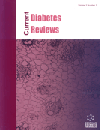
Full text loading...
We use cookies to track usage and preferences.I Understand
Diabetes mellitus (DM) is an autoimmune manifestation defined by persistent hyperglycemia and alterations in protein, fatty substances, and carbohydrate metabolism as an effect of problems with the secretion of insulin action or both. Manifestations include thirst, blurred eyesight, weight loss, and ketoacidosis, which can majorly lead to coma. There are different types of diabetes according to class or by cellular level. They are interrelated with hyperlipidemia as they are involved in the metabolism and regulation of physiological factors. Most parameters are seen at cellular or humoral levels, yet the underlying concern remains the same.
To create a systematic correlation between the disease and locate the exact mechanism and receptors responsible for it. So, this article covers a proper way to resolve the conditions and their manifestation through literacy and diagrammatic.
Hence, this will be an insight for many scholars to understand the exact mechanism involved in the process.

Article metrics loading...

Full text loading...
References


Data & Media loading...

